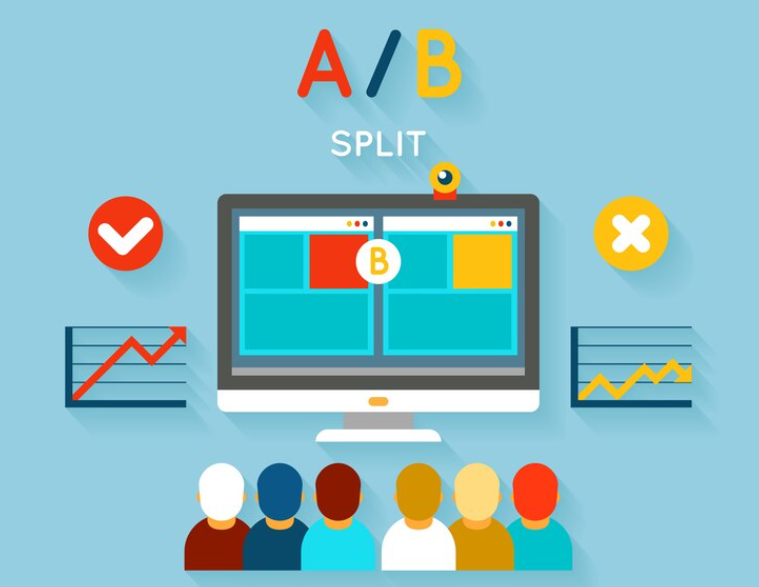A/B testing, also known as split testing, is a crucial method for optimizing landing pages to improve conversion rates. By comparing two versions of a page, you can determine which design, content, or feature resonates better with your audience. Here’s a detailed guide to help you conduct effective A/B testing for your landing pages.
What is A/B Testing?
A/B testing involves creating two variants of a webpage—Version A (control) and Version B (variation)—and testing them against each other. The goal is to analyze performance metrics such as:
- Conversion rates
- Click-through rates
- Time spent on page
This process enables data-driven decisions to refine your landing page design and messaging.
Benefits of A/B Testing for Landing Pages
- Increased Conversion Rates: Test elements like headlines, CTAs, or images to see what drives more conversions.
- Improved User Experience: Identify the design or layout that users find more intuitive.
- Reduced Bounce Rates: Optimize your page to keep visitors engaged longer.
- Better ROI: Maximize the effectiveness of your marketing campaigns by focusing on proven strategies.
How to Conduct A/B Testing for Landing Pages
1. Define Clear Goals
Establish specific objectives for your A/B test:
- Increase form submissions.
- Boost product sales.
- Improve click-through rates.
💡 Example Goal: Increase newsletter sign-ups by 20%.
2. Identify Elements to Test
Choose components of the landing page to modify:
- Headlines: Test different styles, lengths, or tones.
- Images: Compare lifestyle photos, product images, or illustrations.
- Call-to-Action (CTA): Experiment with placement, color, or wording.
- Form Length: Short forms may convert better but gather less data.
- Page Layout: Test single-column vs. multi-column designs.
3. Create Your Variants
Develop two versions of the landing page:
- Version A (Control): The original page.
- Version B (Variation): Includes a single change, such as a new CTA button color or headline.
4. Use A/B Testing Tools
Leverage tools to manage and analyze your tests:
- Google Optimize: Free and integrates with Google Analytics.
- Optimizely: Advanced testing features for businesses.
- VWO (Visual Website Optimizer): Easy-to-use interface for A/B tests.
5. Run the Test
- Set a Duration: Allow enough time for statistically significant results (usually 2–4 weeks).
- Split Traffic: Randomly assign visitors to Version A or Version B.
- Control Variables: Avoid changing multiple elements simultaneously to maintain test accuracy.
6. Analyze Results
Compare the performance metrics of both versions:
- Use KPIs like conversion rates, bounce rates, and engagement time.
- Apply statistical analysis to confirm the results are significant.
💡 Tip: Look for at least a 95% confidence level in your results to ensure reliability.
7. Implement the Winning Variant
Once you identify the better-performing version:
- Make it live on your site.
- Monitor its performance to ensure the changes yield long-term benefits.
Best Practices for A/B Testing Landing Pages
- Test One Element at a Time
- Changing multiple variables can make it difficult to identify what drove the results.
- Segment Your Audience
- Analyze results based on demographics, device type, or traffic source.
- Avoid Bias
- Randomize traffic allocation to minimize external influences.
- Optimize for Mobile
- Ensure the landing page performs well on mobile devices, as they drive significant traffic.
- Iterate Continuously
- A/B testing is not a one-time process; keep refining based on new data and trends.
Common A/B Testing Mistakes to Avoid
- Ending Tests Too Early: Premature conclusions can lead to incorrect decisions.
- Testing Irrelevant Elements: Focus on elements that directly impact user behavior.
- Ignoring Sample Size: Ensure you have sufficient traffic to make statistically valid comparisons.
Conclusion
A/B testing is an invaluable strategy for optimizing landing pages and driving better results. By systematically experimenting with different elements, you can gain insights into user behavior and improve your website’s effectiveness. Start testing today and unlock the full potential of your landing pages.





